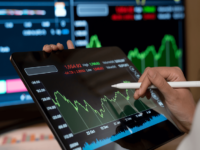Lead Recycling and Its Impact on Pricing

Lead is a versatile and valuable metal with widespread applications, yet it poses significant environmental and health risks if not managed properly. As such, the role of lead recycling is not one to take lightly. This blog post will examine the lead recycling process in-depth, its environmental advantages, and its economic ramifications on the lead price per pound.
Introduction to Lead Recycling
Lead recycling is a critical component of environmental stewardship. It targets the reclamation of lead from various sources, particularly lead-acid batteries, for reuse in new products. This conserves natural resources and mitigates the environmental burden associated with lead extraction and processing.
Knowing the lead price per pound is instrumental for industry stakeholders—it directly influences recycling initiatives and profitability.
The Lead Recycling Process
From collection circuits to the final purification stages, every phase of lead recycling involves meticulous steps:
- Collection: Recovering used lead-containing products, such as obsolete lead-acid batteries, for recycling.
- Smelting: Melting down the lead at high temperatures in a controlled environment to separate it from other components.
- Purification: Refining the smelted lead to remove impurities, ensuring it meets industry specifications for new product manufacturing.
- Casting: Shaping the purified lead into ingots or other forms suitable for transport and storage.
- Transportation: Delivering the recycled lead to manufacturers for use in new products.
Environmental Benefits of Lead Recycling
Lead recycling offers substantial environmental benefits. Compared to primary lead production, the industry significantly reduces energy consumption by repurposing lead through recycling processes. This reduction in energy usage means fewer greenhouse gases and pollutants being released into the atmosphere. This contributes positively to air quality and mitigates climate change impacts.
Moreover, lead recycling helps curtail the demand for newly mined lead. Thereby, it lessens the environmental damage caused by mining activities. By preserving ecological systems from the detrimental effects of mining, lead recycling supports sustainable resource management and fosters environmental stewardship.
Overall, lead recycling plays a vital role in reducing environmental harm. Simultaneously, it promotes a more sustainable approach to resource utilization.
Economic Impact of Lead Recycling
The global lead market and pricing structures are inherently influenced by lead recycling. Recycled lead provides a substantial portion of the overall market supply, directly affecting the price equilibrium. Volatility in the availability and cost of recycled lead can lead to fluctuations in the ‘lead price per pound.’ This impacts buyers and sellers worldwide.
Factors Influencing Lead Recycling Prices
Here, we dissect the myriad elements shaping lead recycling prices:
Supply and Demand Dynamics
An increase in demand for lead commonly triggers a surge in recycling efforts to meet market shortages, bolstering recycled lead prices. Conversely, a dip in demand or spike in primary production could diminish reliance on recycled lead, leading to price reductions.
Economic Factors
Raw material costs, energy expenses, and regulatory pressures influence the profitability of lead recycling. These economic variabilities can significantly impact the pricing and availability of recycled lead.
Environmental Regulations
Stringent regulations can increase the demand for lead recycling operations, propelling prices. In contrast, lenient regulations may lessen recycling operations’ operational costs and reduce prices.
Technological Advancements
Innovations in recycling technology have the potential to streamline the recycling process, increasing supply and potentially driving prices down. On the flip side, technological setbacks may restrict supply, escalating prices.
Market Sentiment and Geopolitical Factors
External influences, such as international trade disputes, currency shifts, and speculative activities, can unpredictably affect lead prices independent of the recycling industry’s direct input.
Long-Term Trends
The growing commitment to environmental sustainability forecasts an increased focus on lead recycling, promising price stability as recycling becomes more ingrained in material sourcing strategies.
Challenges and Opportunities in Lead Recycling
Contamination concerns and economic and regulatory hurdles pose significant challenges to the lead recycling industry. However, these challenges also open doors for technological progress and market development, presenting opportunities for enhanced efficiency and market growth.
Here’s a little more about the current challenges and opportunities in lead recycling:
Challenges in Lead Recycling
Here are some of the most pressing challenges faced by lead recycling operations:
- Contamination Concerns: Lead recycling faces significant challenges related to contamination. Lead-acid batteries, the primary source of recycled lead, often contain impurities such as sulfuric acid, plastics, and other metals. Contamination can reduce the quality of recycled lead and increase processing costs.
- Economic Hurdles: Economic factors, including volatile raw material prices and fluctuating energy costs, pose challenges to the profitability of lead recycling operations. High operational costs can hinder investment in recycling infrastructure and technology.
- Regulatory Compliance: Compliance with environmental regulations adds complexity and cost to lead recycling operations. Strict regulations governing the handling, transportation, and disposal of lead-containing materials require significant investment in pollution control measures and regulatory compliance.
Opportunities in Lead Recycling
Fortunately, the challenges faced by lead recycling also present opportunities for innovation and growth. Some potential opportunities in the industry include:
- Technological Progress: Despite the challenges, technological advancements offer opportunities for improving lead recycling processes. Innovations in separation, purification, and refining technologies can enhance efficiency, reduce contamination, and lower processing costs.
- Market Development: Growing awareness of environmental sustainability and the circular economy presents opportunities for market development in lead recycling. Increasing demand for recycled materials, driven by environmental regulations and corporate sustainability initiatives, creates a favorable market environment for recycled lead.
- Resource Conservation: Lead recycling offers opportunities for resource conservation by reducing the reliance on primary lead production. Recycled lead requires less energy and generates fewer emissions than primary production, contributing to environmental sustainability goals.
- Circular Economy Initiatives: Lead recycling aligns with the principles of the circular economy—one that aims to minimize waste and maximize resource efficiency. Emphasizing the reuse and recycling of lead-containing materials promotes a closed-loop system. Materials are repeatedly recycled and reused, reducing the need for virgin resources.
- Investment Potential: Despite the challenges, lead recycling presents investment potential in developing recycling infrastructure and technologies. Governments, private investors, and companies increasingly recognize the value of investing in sustainable practices, creating opportunities for funding and partnerships in the lead recycling sector.
Get the Best Lead Price Per Pound
Recycling and reclaiming lead are undeniably essential to both our planet’s health and the balance within global markets. A commitment to increased investment in the lead recycling sector and more significant support for scrap metal removal initiatives would multiply the environmental and economic advantages we’ve explored.
With each pound of lead recycled, we take a step forward in conservation and responsible resource management. The actions undertaken today in the realm of lead recycling will help shape a more sustainable and economically feasible future.





